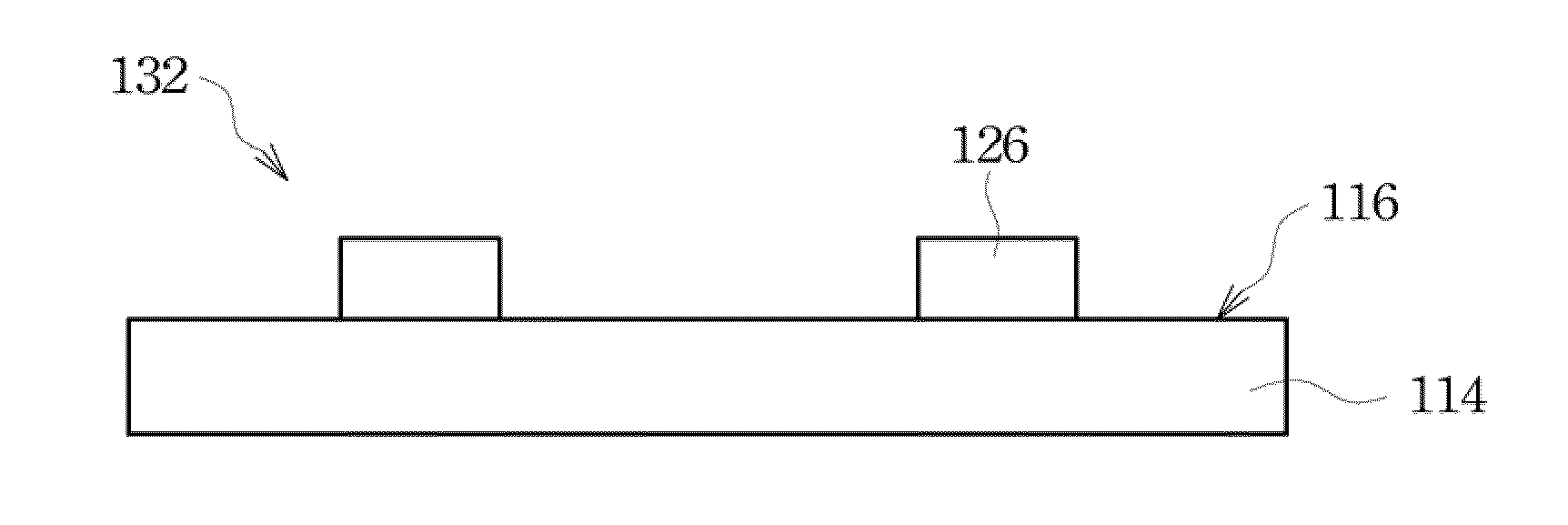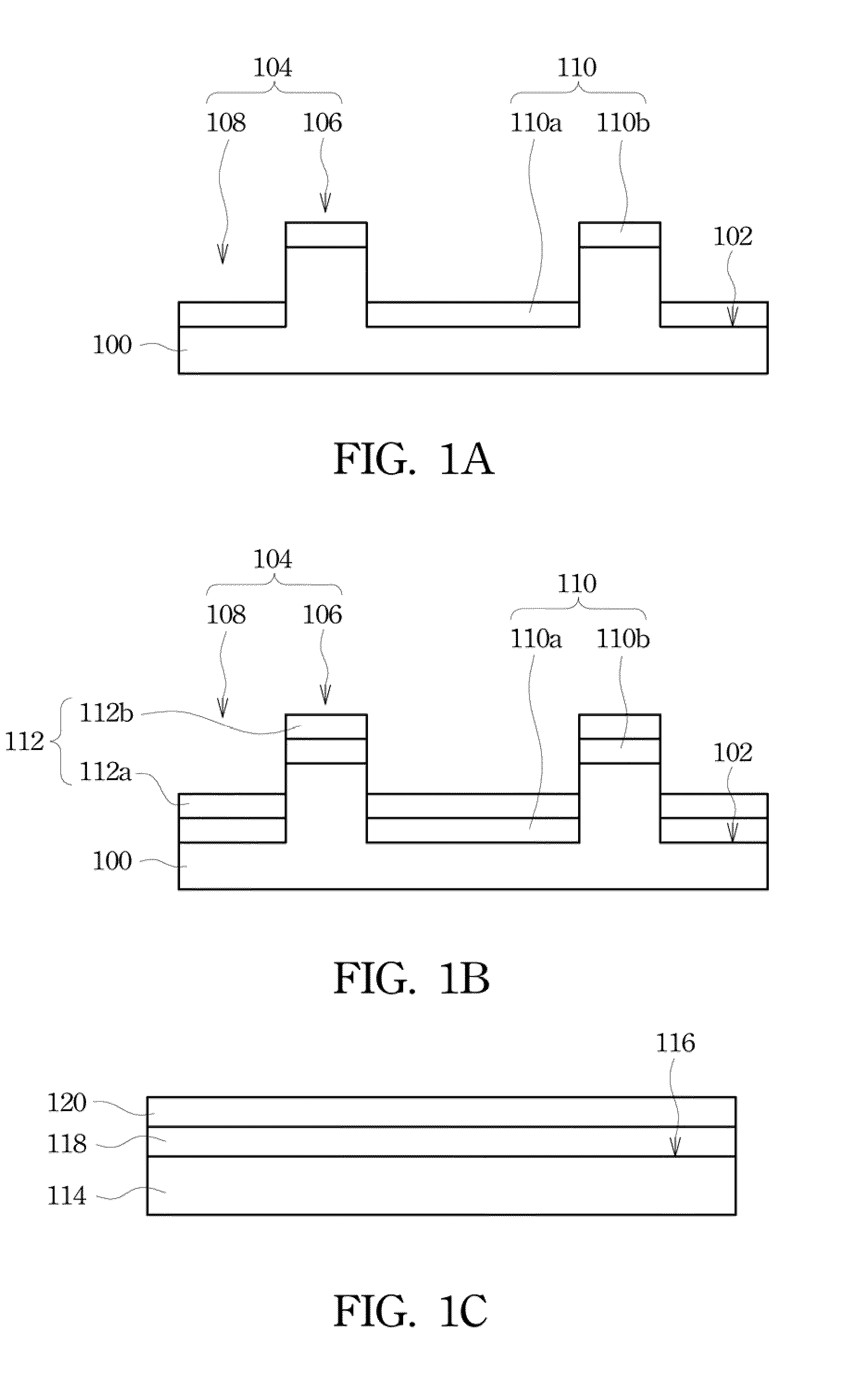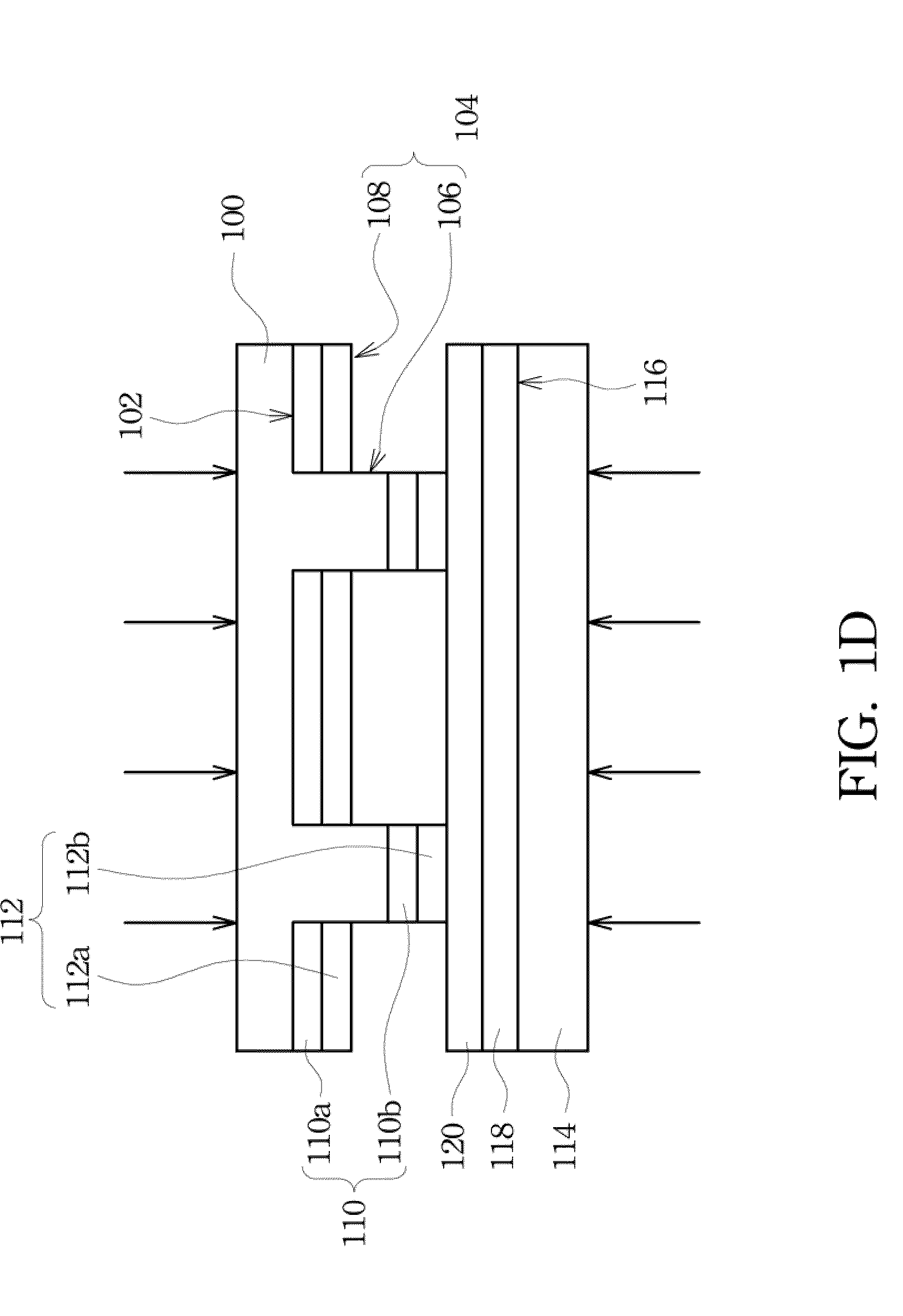Imprint process of thermosetting material
a thermosetting material and imprinting technology, applied in patterning and lithography, printed circuit manufacturing, lithography/patterning, etc., can solve the problems of large amount of laser energy, increased cost, and the inability of laser machining technology to produce patterns with too small sizes, so as to increase the accuracy and reliability of pattern transfer
- Summary
- Abstract
- Description
- Claims
- Application Information
AI Technical Summary
Benefits of technology
Problems solved by technology
Method used
Image
Examples
Embodiment Construction
[0015]FIGS. 1A through 1H are schematic flow diagrams showing an imprint process of a thermosetting material in accordance with a preferred embodiment of the present invention. In an exemplary embodiment, when the imprint process of a thermosetting material is performed, a mold 100 may be provided to perform the imprint process. A pattern structure 104 is set in a surface 102 of the mold 100, wherein the pattern structure 104 comprises a plurality of concave portions 108 and a plurality of convex portions 106. The feature size of the pattern structure 104 may be micrometer scale or nanometer scale. Next, such as shown in FIG. 1A, an anti-stick layer 110 is selectively formed to cover the pattern structure 104 of the mold 100 by, for example, a thermal evaporation method, wherein the anti-stick layer 110 includes two portions 110a and 110b, the portion 110a of the anti-stick layer 110 covers on bottoms of the concave portions 108 of the pattern structure 104, and the portion 110b of ...
PUM
| Property | Measurement | Unit |
|---|---|---|
| Temperature | aaaaa | aaaaa |
| Temperature | aaaaa | aaaaa |
| Temperature | aaaaa | aaaaa |
Abstract
Description
Claims
Application Information
 Login to View More
Login to View More - R&D
- Intellectual Property
- Life Sciences
- Materials
- Tech Scout
- Unparalleled Data Quality
- Higher Quality Content
- 60% Fewer Hallucinations
Browse by: Latest US Patents, China's latest patents, Technical Efficacy Thesaurus, Application Domain, Technology Topic, Popular Technical Reports.
© 2025 PatSnap. All rights reserved.Legal|Privacy policy|Modern Slavery Act Transparency Statement|Sitemap|About US| Contact US: help@patsnap.com



